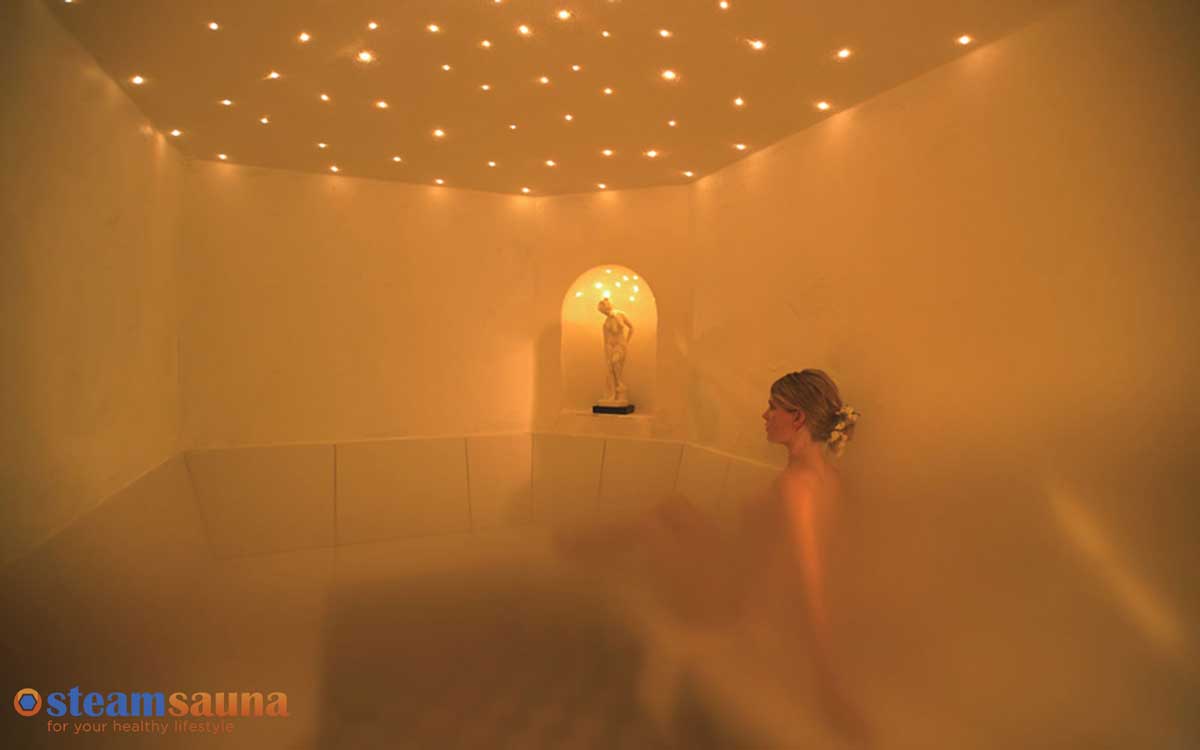
Steam bathing is not a term we hear often in North American culture but it’s one that is shared frequently in others. Steam baths have been used for 1,000s of years, by the ancient Greeks, in Turkey, and in parts of Russia. There exists unique steam bath traditions in each of these cultures.
Today’s inventory of steam baths are found mainly in upscale, luxury spas and high-expense exercise facilities. That said, they are becoming more popular for home installation as well, something which is attributable to advances in steam generator technology. These days, steam baths can be installed in any bathroom, however small or large it may be.
We oftentimes confuse the terms ‘steam bath’, ‘steam sauna’, and ‘steam shower’ to mean the same thing. They’re not. A steam bath is a complete enclosure with a temperature set at 45 degrees Celsius, fed with a steam generator which produces thick mist clouds. For a steam bath to work, evidently, the room needs to be sealed. This is to prevent the steam from escaping. Improperly sealed steam rooms can lead to moisture gathering in places you don’t want it to, possibly causing mildew, bacterial growth, and property damage.
Now a steam shower is a little different from a steam bath. A steam shower is, basically, a steam bath on a much smaller scale. A steam shower only accommodates up to two people and sometimes even only one. It can be installed in a standard shower stall, no problem. Steam showers are most often recommended for homeowners seeking a steam bath. They save cost, space, and more. Then, there’s a steam sauna which is another name for a steam bath but is oftentimes used improperly. After all, a sauna’s an entirely different room with dry heat and a higher temperature than a steam bath, heating up to 100 degrees Celsius. In a sauna, you face 20% humidity as opposed to a steam bath where you’ll have 100% humidity.
Installing a steam bath in your home, you may be concerned with the build-up of humidity. Thankfully, any bathroom with an enclosed shower stall makes for the perfect setting for the installation of a steam shower. As long as it’s fully enclosed, you don’t need to be concerned about humidity gathering in excess anywhere in the room or home. A steam shower is a unit enclosed, containing its moisture and allowing it to drain. Now, if you don’t have an enclosed shower or bath, they can be modified to accommodate a steam shower. Alternatively if the bathroom’s large enough, you can even build a separate stall for the steam shower – something which you may find easier or less expensive.
In steam bathing, the stream generator can be installed up to 40 feet away. The generator requires an electrical connection, with some models needing to be connected to the drain. The steam head usually has built-in controls or may contain controls from an external unit.
Steam baths are very relaxing. Most people spend more time in a steam bath than they would their regular shower. For this reason, you may want to install a seat or seating arrangement. A steam head should be installed away from any seating so that the material does not end up scalded in any way from the hot steam.
